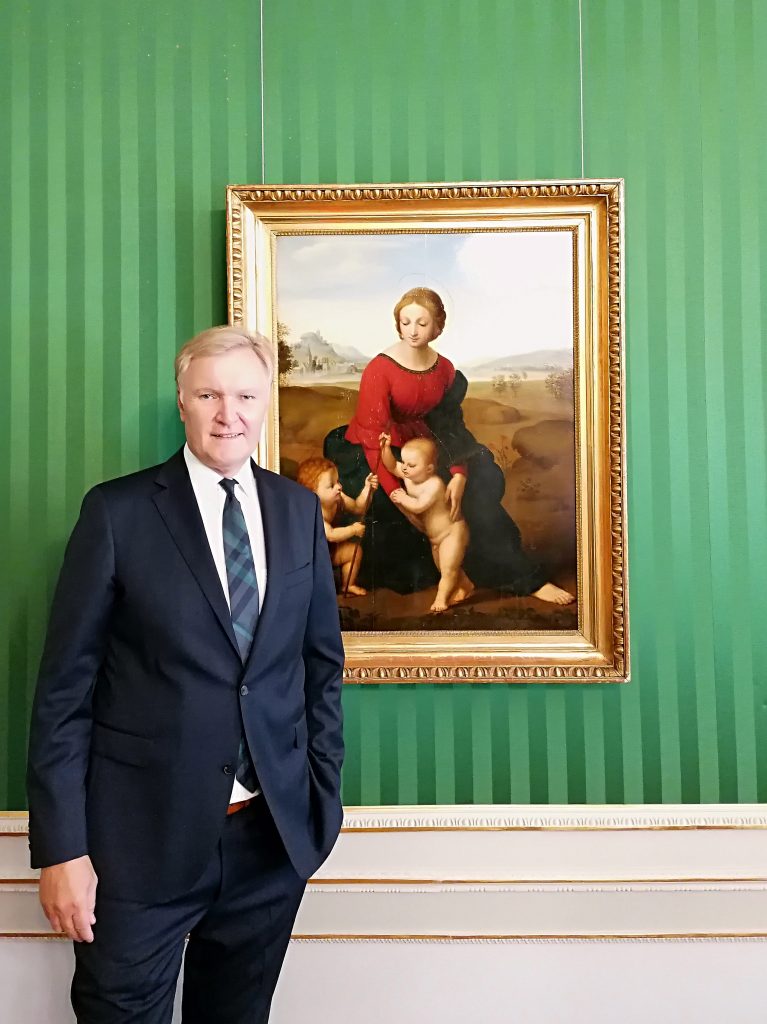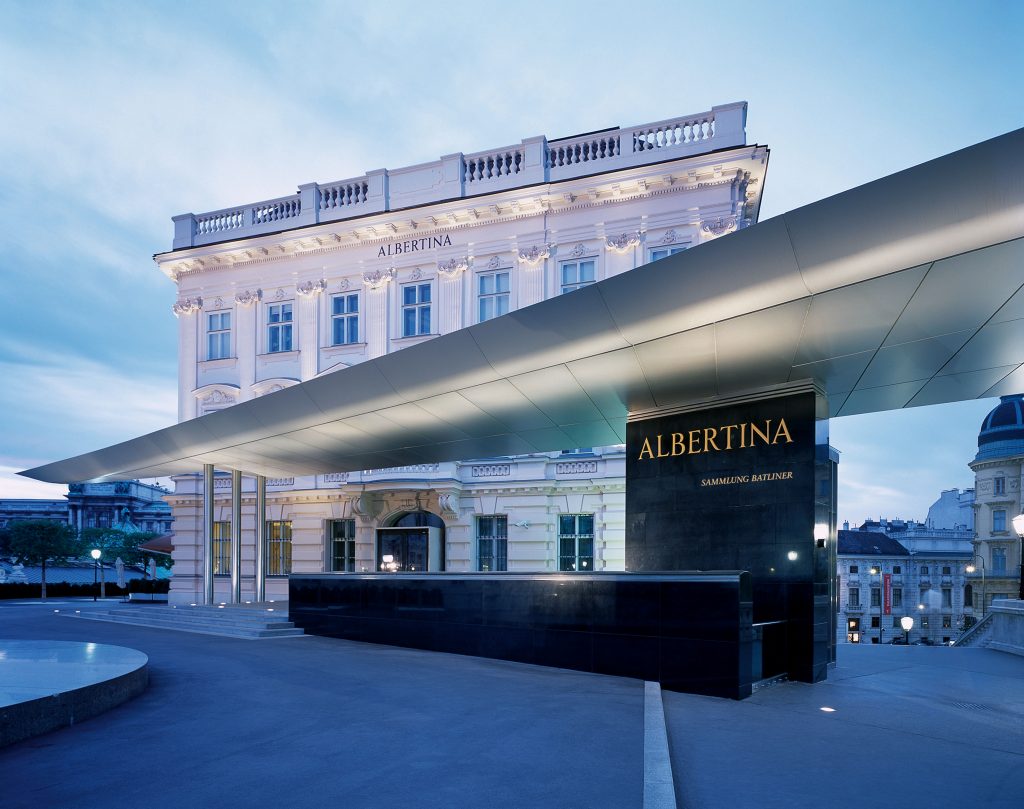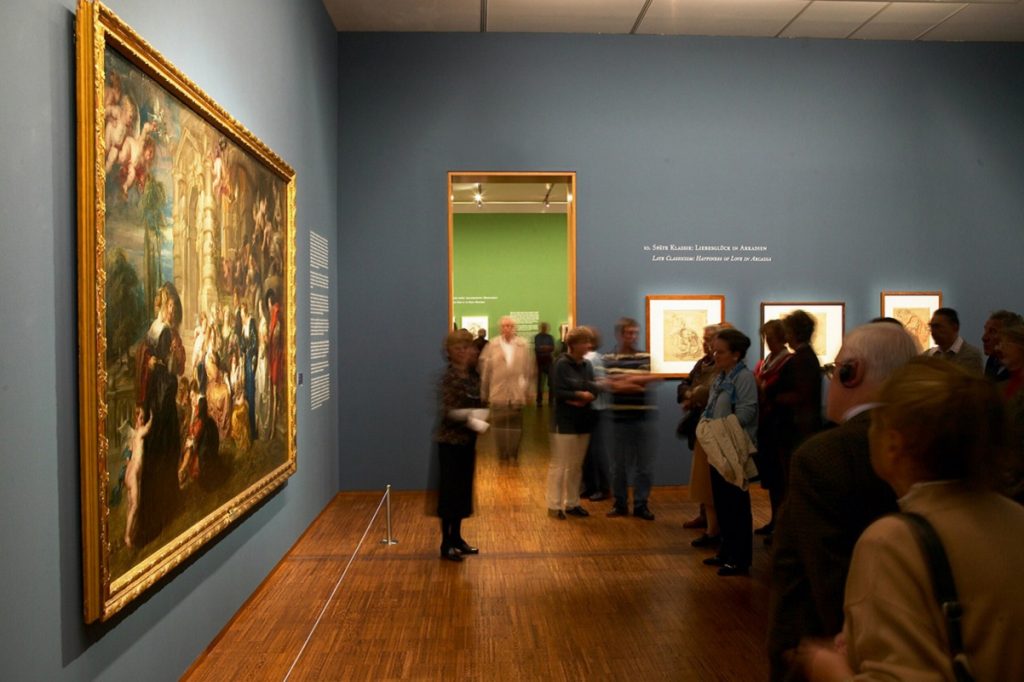By Svetlana Nenadović-Glušac / Diplomacy&Commerce Austria
Some collectors see works of art as an object of speculation while some share their wealth with the world through works of art
The pandemic caused by the Sars-Cov-2 virus has affected the global economy, leaving its mark on every industry and, above all, negatively affecting the arts sector. All the governments of the world are struggling to have as few human casualties as possible, save the domestic economy, provide medical care, and protect their citizens as best they can, and in this struggle, the arts are almost marginalized. All branches of art are feeling the crisis, and among them, museums are the ones which were hardest hit.
In an exclusive interview with Professor Klaus Albrecht Schröder, PhD, Director General the ALBERTINA Museum, we will find out how the pandemic-induced crisis has affected museums.

The pandemic emerged shortly before the opening of the Albertina Modern, which was planned for March 2020, and was followed by a lockdown. As a result, both Albertina museums had to close. To what extent did the lockdown affect Albertina’s financial year?
Due to the repeated closure, I cannot precisely quantify the loss of income, but we anticipate the loss to be around 12 million euro. Shorter opening hours brought around 900,000 euro, we received 2.8 million euro from the corona fund and we were also able to save over 6 million euro through cancellations and postponements.
Normally, we have over 1 million visitors a year, but this year, we will have a maximum of 300,000. However, in the eight days before the closure alone, the two Albertina locations had 15,000 visitors, as both the opening show in the Albertina Modern and “Van Gogh, Cézanne, Matisse. The Hahnloser Collection” were nearing their end. My heart is bleeding that these exhibitions will be closed until the end of the term. Due to the lockdown, we now expect higher costs in paying 70 international loans.
The rush of visitors over the past few days has shown the population’s vital need to take part in an extraordinary cultural experience which is a necessary outlet in these difficult times.
Many museums around the world offered virtual tours during the lockdown. Do you think there is potential for future museum business as a result?
We are currently working hard on new formats for mediation and are testing online tours, digital exhibition tours and expanding our range of videos. The online collections were re-launched in the spring. We have a very good range of social media services and are well-positioned internationally. All of this is important to stay relevant, but for me, it cannot replace the encounter with the original work of art.
How does the “new normal” affect the business of the Albertina museums, since museums are no longer allowed to be open to the public as part of pandemic measures?
I am disappointed and saddened that, contrary to the draft laws, the museums must now be closed. Nobody tried to have a different view of the requirements. The museums in particular have behaved in an exemplary manner in recent months. Without any legal requirements, the Albertina introduced a mandatory mask requirement in July for low-level infections and was able to guarantee the minimum physical distance of one metre.
These measures were very well received by the public in the summer. Besides, it was not taken into account that our ventilation and air conditioning systems completely replace the oxygen in a gallery every 5 to 10 minutes. However, a museum is more than just its exhibition business. There is ongoing research and we are already working on setting up the follow-up exhibitions and catalogues for 2021.

The pandemic has caused an almost unbelievable turnaround in terms of museums in countries that have so-called liberal cultural policies. In the United States, museums are allowed to trade in artwork from their collections. What is your opinion about this type of business?
There was and still is a full consensus that the money generated for sales should be used for repurchases. I’m the last one to throw stones now. This happened out of great need, I understand that. We are in the middle of a health crisis that will result in an economic crisis.
Recently, the Brooklyn Museum of Art sold nine of the ten works auctioned by New York’s Christie’s, including “Lucrezia”, a 16th-century masterpiece by Lucas Cranach Sr. that raised $ 6.6 million for the museum. Can you imagine something like that happening in Austria?
Fortunately, we don’t have to ask ourselves this question. That’s unthinkable in Europe today. Until the 1960s, however, thousands of pieces of art from our collection were sold. This was legal as the owner of the museum, the Finance Ministry, can in principle sell works from the federal government. And we could just as well sell works that we as a scientific institution under public law received or acquired as gifts after 1999. However, we are not even remotely faced with this question.
It was announced at an auction at Sotheby’s in New York that works by Monet, Degas, Miró, Mathis and several other famous artists from the museum’s collection would soon be on offer for sale. Do you think that this type of fundraising takes valuable and important works of art away from the general public forever, hiding them from the eyes of mankind and thus reducing the business of museums in the future?
Some collectors see works of art as an object of speculation while some share their wealth with the world through works of art. Today, you have to have collectors because the prices of contemporary art have risen so immeasurably that a purchase of first-class works for a museum is only affordable in the rarest of cases. We receive donations from famous artists because, as an institution, we can promise eternity.
Private collections, such as Batliner, Essl or, most recently, Jablonka, are closely linked to our establishment and have made it possible for millions of visitors to encounter outstanding works of modernity and the present. But don’t be mistaken when it comes to hiding. As a museum, we are primarily a store of knowledge and only regularly show a small part of our collection that numbers 1.1 million pieces of art.

What are your plans for the Albertina?
The Albertina Modern has been very well received by the Viennese public in recent months. I would be delighted if the follow-up exhibitions also generate a positive response internationally. I’m in the middle of the preparations for “The Essl Collection” and other exhibitions, together with the new chief curator Angela Stief. I want to get both establishments safely through the crisis and continue to stage top-class exhibitions.
How are the preparations for the long-awaited Modigliani exhibition going?
Unfortunately, the exhibition had to be postponed to autumn 2021. All lenders were very understanding and cooperative. I think a pioneer like Amedeo Modigliani deserves to be accessible to a large audience, but this is not possible for the time being due to travel restrictions. The exhibition “Munch and the Consequences” is also being rescheduled and will now take place in 2022 instead of spring 2021.
Plans for the next year
What can art and Albertina fans expect in 2021?
In the spring, we will present retrospectives by the two important contemporary artists Michela Ghisetti and Xenia Hausner. In the field of photography, we will showcase masterpieces by Lerski and Sander from the interwar period with “Faces” and, in the summer, we will present the Japanese photographer Araki. In terms of our collections, there will be spectacular presentations based on Schiele and Michelangelo as we are currently still working on the programme.